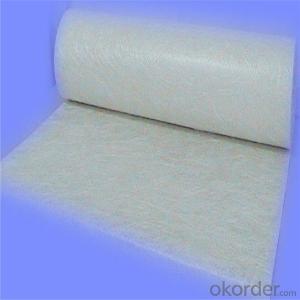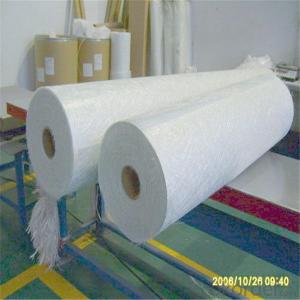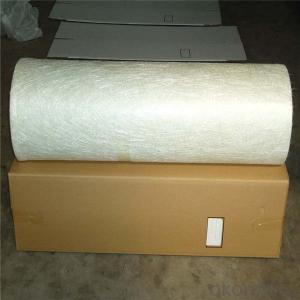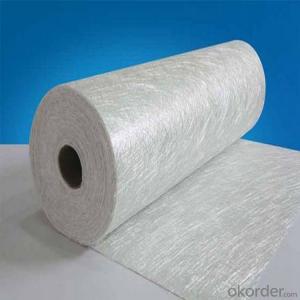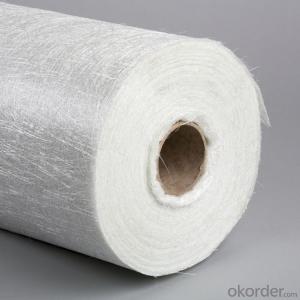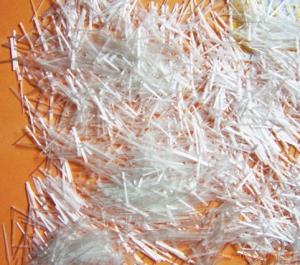2015 E-GLASS Powder Chopped Stand Mats
- Loading Port:
- Tianjin
- Payment Terms:
- TT OR LC
- Min Order Qty:
- 100 m.t.
- Supply Capability:
- 20000 m.t./month
OKorder Service Pledge
Quality Product, Order Online Tracking, Timely Delivery
OKorder Financial Service
Credit Rating, Credit Services, Credit Purchasing
You Might Also Like
Quick Details
| Technique: | Chopped Strand Fiberglass Mat (CSM) | Dimensions: | 450gsm | Mat Type: | Continuous Filament Mat |
| Fiberglass Type: | E-Glass | Softness: | softness | Place of Origin: | Jiangxi, China (Mainland) |
| Brand Name: | cnbm | Model Number: | 450gsm | color: | white |
| fiberglass type: | E glass | product: | e-glass powder chopped stand mats | binder: | powder or emulsion |
| width: | 1040 or 1270mm, as your requirement | weight: | 30 or 45kg/roll | paper tube diameter: | 90mm |
| outer diameter of roll: | 256mm | packing: | plastic film+carton box + pallet |
Packaging & Delivery
| Packaging Details: | plastic film+carton box + pallet |
| Delivery Detail: | 15-20days |
Specifications
1.e-glass powder chopped stand mats
2.binder:power or emulsion
3.width:1040mm or 1270mm
4.weight:450gsm
Picture
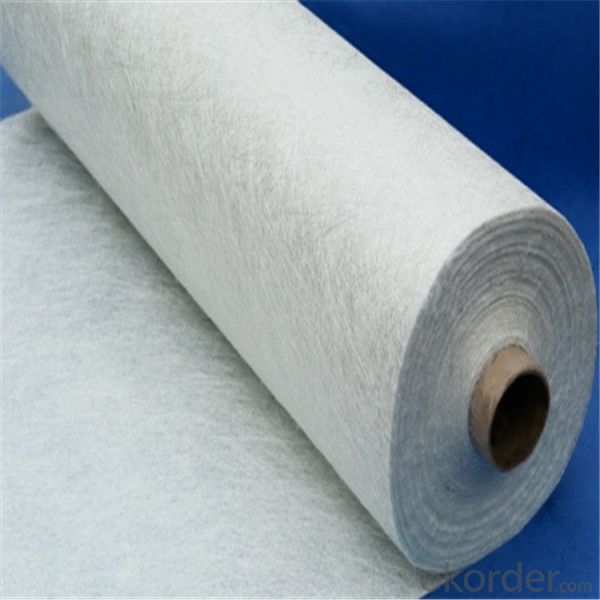
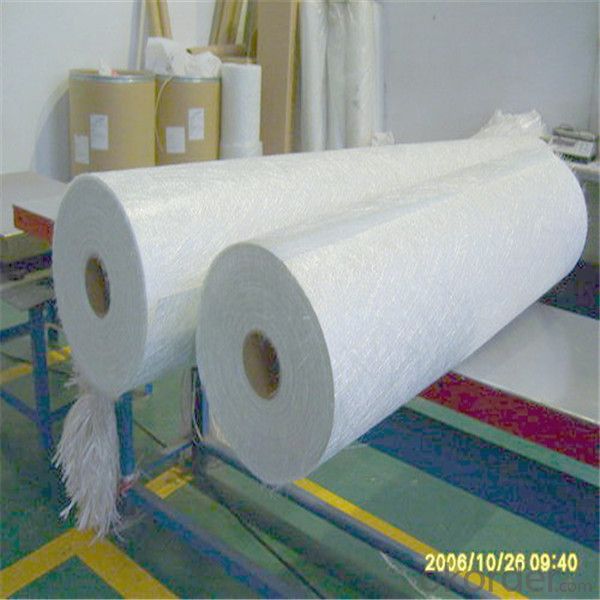
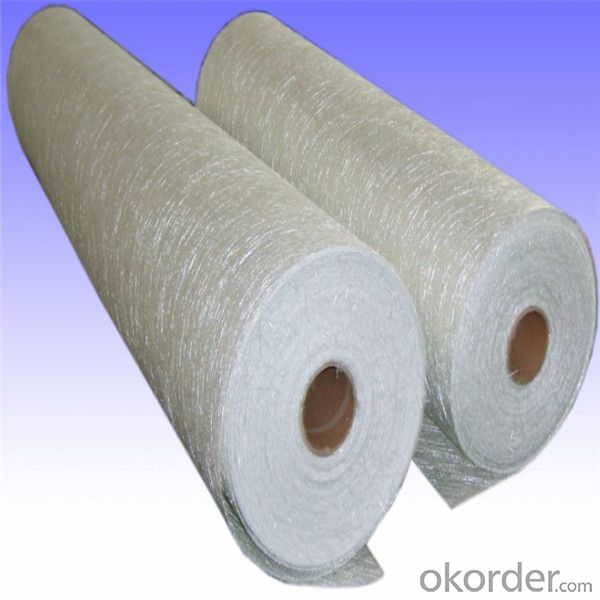
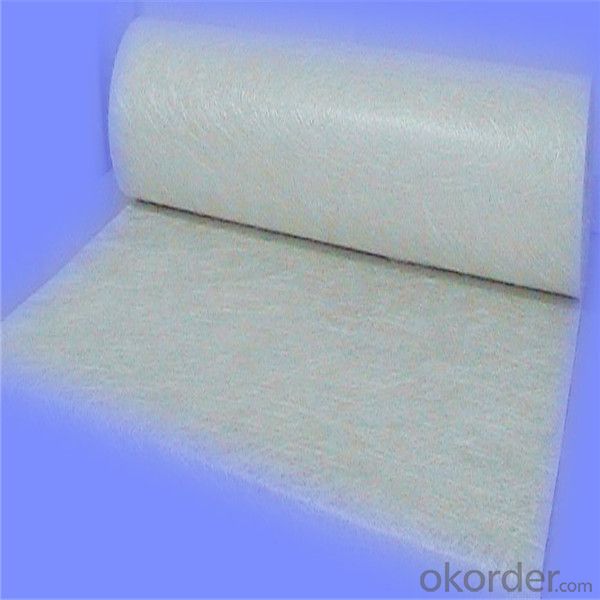
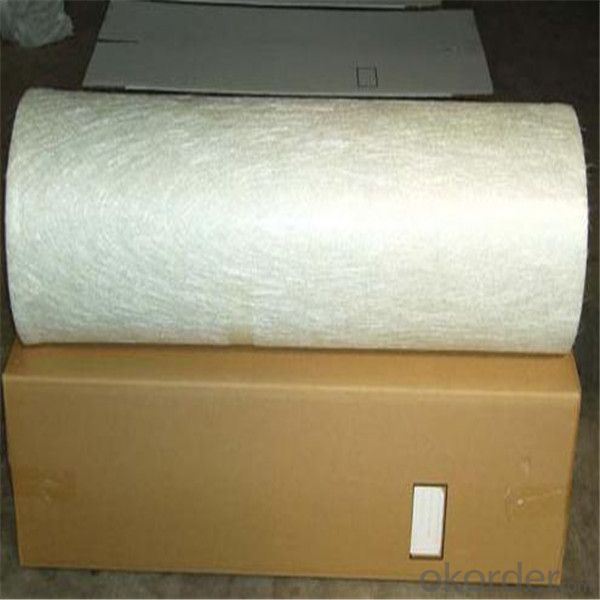
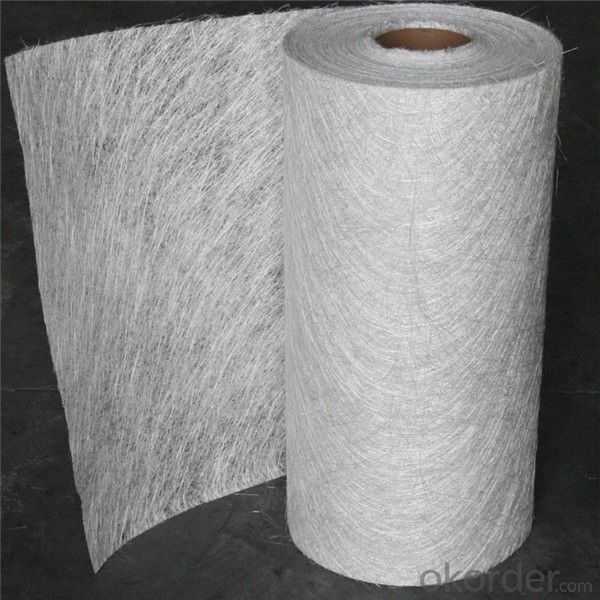
- Q:What are the typical weight percentages of fiberglass chopped strand used in composites?
- The typical weight percentages of fiberglass chopped strand used in composites can vary depending on the specific application and desired properties of the composite material. However, in general, the weight percentage of fiberglass chopped strand in composites is typically between 10% to 40%. Lower weight percentages, such as 10% to 20%, are commonly used when the main goal is to enhance the tensile strength and stiffness of the composite material. This is particularly useful in applications where high strength is necessary, such as in structural components for aerospace or automotive industries. Higher weight percentages, ranging from 30% to 40%, are often used when the primary objective is to improve impact resistance and durability of the composite. This is typically seen in applications where the material needs to withstand high levels of stress or impact, such as in sporting goods or marine applications. It is important to note that these weight percentages are just general guidelines and can vary depending on the specific requirements and manufacturing processes involved. Additionally, other reinforcing materials or fillers may be added to the composite, further affecting the weight percentage of the fiberglass chopped strand. Ultimately, the selection of the weight percentage depends on the desired characteristics and performance of the final composite product.
- Q:What are the different certifications and standards applicable to fiberglass chopped strand?
- Fiberglass chopped strand is subject to numerous certifications and standards, all of which guarantee the product's quality and safety. Among the most prevalent certifications and standards are: 1. ISO 9001: This certification establishes a quality management system that requires manufacturers to adhere to globally recognized quality standards during the production of fiberglass chopped strand. 2. ASTM D578-13: This American Society for Testing and Materials (ASTM) standard outlines specifications for glass fiber strands used in reinforced plastics. 3. UL 94: Underwriters Laboratories (UL) has established this flammability standard to evaluate the flammability of materials, including fiberglass chopped strand. 4. RoHS: The Restriction of Hazardous Substances (RoHS) directive regulates the use of certain hazardous substances in electrical and electronic equipment, including fiberglass chopped strand. 5. REACH: The Registration, Evaluation, Authorization, and Restriction of Chemicals (REACH) regulation, a European Union standard, ensures the safe utilization of chemicals involved in the production of fiberglass chopped strand. 6. JIS: The Japanese Industrial Standards (JIS) provide specifications for various industrial activities in Japan, including the manufacturing and application of fiberglass chopped strand. 7. OSHA: The Occupational Safety and Health Administration (OSHA) establishes regulations and standards pertaining to workplace safety in the United States, encompassing the handling and usage of fiberglass chopped strand. These certifications and standards offer consumers and end-users reassurance regarding the quality, safety, and environmental aspects of fiberglass chopped strand. Manufacturers and suppliers must comply with these certifications and standards to guarantee customer satisfaction and adherence to regulatory requirements.
- Q:Does fiberglass chopped strand improve the impact resistance of composite materials?
- Yes, fiberglass chopped strand does improve the impact resistance of composite materials. Chopped strand is made up of small, randomly oriented fibers that are mixed into the composite material during the manufacturing process. These fibers provide reinforcement and enhance the overall strength and durability of the composite. When an impact occurs, the fiberglass chopped strand helps to distribute the force and absorb the energy, preventing it from concentrating in one area and causing damage. The fibers act as a barrier, absorbing and dispersing the impact energy throughout the composite material, thereby reducing the likelihood of cracks or fractures. Furthermore, fiberglass chopped strand enhances the interfacial bonding between the fibers and the matrix of the composite, improving the load transfer capability. This increased bonding strength contributes to the overall impact resistance of the composite material. In summary, the addition of fiberglass chopped strand to composite materials significantly improves their impact resistance by dispersing and absorbing impact energy, preventing localized damage, and enhancing the overall strength and durability of the composite.
- Q:How does the fiber content affect the dimensional stability of fiberglass chopped strand composites?
- The fiber content in fiberglass chopped strand composites directly influences the dimensional stability of the material. Higher fiber content enhances the overall strength and stiffness of the composite, thereby minimizing dimensional changes and ensuring improved stability. Conversely, lower fiber content may result in reduced dimensional stability and increased susceptibility to deformation or warping under external forces. Overall, a higher fiber content provides better dimensional stability to fiberglass chopped strand composites.
- Q:What are the water absorption properties of fiberglass chopped strand?
- Fiberglass chopped strand has excellent water absorption properties. Due to its composition, it is resistant to moisture and does not absorb water easily. This makes it ideal for applications where water resistance is required, such as in the construction industry or for making water tanks and pipes.
- Q:Can fiberglass chopped strand be used in consumer product applications?
- Yes, fiberglass chopped strand can be used in consumer product applications.
- Q:What are the dimensional stability properties of fiberglass chopped strand?
- The dimensional stability properties of fiberglass chopped strand are exceptional. This is attributed to the combination of the inherent rigidity and strength of glass fibers and the resin matrix that binds them together. The tightly bound and evenly dispersed chopped strands form a reinforcing network that resists deformation and retains its shape even when subjected to different environmental conditions and mechanical stresses. One notable dimensional stability property of fiberglass chopped strand is its low coefficient of thermal expansion. This means that it experiences minimal expansion or contraction with temperature changes, minimizing the risk of warping or distortion. This characteristic makes fiberglass chopped strand ideal for applications that demand precise dimensions, such as automotive components, boat hulls, and construction materials. Moreover, fiberglass chopped strand exhibits high resistance to moisture absorption and humidity. This characteristic prevents swelling or shrinking that could alter its dimensions. It also makes fiberglass chopped strand suitable for use in outdoor and wet environments, where other materials may deteriorate or lose their dimensional stability. Furthermore, fiberglass chopped strand demonstrates excellent resistance to chemical and solvent attacks, which preserves its dimensional stability even in corrosive environments. This property is particularly crucial in industrial settings, where exposure to chemicals or harsh substances can cause dimensional changes in alternative materials. Overall, the dimensional stability properties of fiberglass chopped strand make it a dependable and long-lasting material for a wide array of applications. Its ability to maintain its shape and dimensions under diverse conditions ensures sustained performance and structural integrity.
- Q:Can fiberglass chopped strand be used in the production of automotive parts?
- Yes, fiberglass chopped strand can be used in the production of automotive parts. Fiberglass chopped strand is a type of reinforcement material that is made by chopping fiberglass strands into small pieces. This material is commonly used in the manufacturing of automotive parts due to its high strength-to-weight ratio, durability, and cost-effectiveness. In the automotive industry, fiberglass chopped strand is often used in the production of various components such as body panels, bumpers, hoods, fenders, and interior parts. It is commonly used in combination with resin to create composite materials that offer excellent strength and stiffness properties. The chopped strand length and orientation can be customized to meet specific design requirements, allowing for a wide range of applications in automotive manufacturing. Furthermore, fiberglass chopped strand offers several advantages for automotive parts production. Firstly, it is lightweight, which helps reduce the overall weight of the vehicle and improve fuel efficiency. Additionally, it has excellent corrosion resistance, making it suitable for automotive applications exposed to harsh environments. Moreover, fiberglass chopped strand has good dimensional stability and can withstand high temperatures, making it suitable for under-the-hood components. Overall, fiberglass chopped strand is a versatile and reliable material that can be effectively used in the production of automotive parts. Its unique properties make it an ideal choice for manufacturers looking to enhance the performance, durability, and cost-effectiveness of their automotive components.
- Q:Is fiberglass chopped strand suitable for applications requiring high chemical resistance?
- Fiberglass chopped strand is unsuitable for applications that demand high chemical resistance. Despite its reputation for strength and durability, fiberglass does not possess inherent chemical resistance. Comprised of resin-bound small strands of glass fibers, fiberglass chopped strand is vulnerable to chemical deterioration and may not withstand environments with intense chemical exposure. To ensure high chemical resistance, it is advisable to explore alternative materials explicitly engineered for this purpose, such as chemical-resistant plastics, metals, or composites.
- Q:How does the moisture absorption of fiberglass chopped strand affect its performance?
- The moisture absorption of fiberglass chopped strand can significantly affect its performance. Fiberglass is known for its excellent strength and durability properties, making it a popular choice in various industries such as automotive, aerospace, construction, and marine. However, when fiberglass is exposed to moisture, it can undergo a process called hydrolysis, which weakens its structural integrity. Moisture absorption in fiberglass chopped strand occurs when the material comes into contact with water or high humidity environments. As water molecules penetrate the surface of the fiberglass, they react with the resin matrix that holds the strands together. This reaction can cause the resin to break down, leading to a reduction in the material's mechanical properties, such as strength, stiffness, and dimensional stability. The presence of moisture in fiberglass chopped strand can also promote the growth of mold, mildew, and other fungi. These microorganisms can further degrade the material, leading to discoloration, foul odors, and even structural damage. Additionally, the weight gain resulting from moisture absorption can negatively impact the overall weight-to-strength ratio of the fiberglass, making it less efficient in applications where weight reduction is crucial. Furthermore, moisture absorption can alter the thermal and electrical conductivity of fiberglass chopped strand. Water is a good conductor of heat and electricity, so the presence of moisture can increase the thermal and electrical conductivity of the material, which may not be desirable in certain applications. To mitigate the negative effects of moisture absorption, various measures can be taken. One common approach is the use of protective coatings or treatments on the fiberglass surface to create a barrier against water penetration. Additionally, using hydrophobic or moisture-resistant resins during the manufacturing process can help minimize the moisture absorption rate. In conclusion, the moisture absorption of fiberglass chopped strand can have a significant impact on its performance. It can lead to a reduction in mechanical properties, promote the growth of microorganisms, increase weight, and alter thermal and electrical conductivity. Taking appropriate measures to minimize moisture absorption is crucial to ensure the optimal performance and longevity of fiberglass chopped strand in various applications.
1. Manufacturer Overview |
|
|---|---|
| Location | |
| Year Established | |
| Annual Output Value | |
| Main Markets | |
| Company Certifications | |
2. Manufacturer Certificates |
|
|---|---|
| a) Certification Name | |
| Range | |
| Reference | |
| Validity Period | |
3. Manufacturer Capability |
|
|---|---|
| a)Trade Capacity | |
| Nearest Port | |
| Export Percentage | |
| No.of Employees in Trade Department | |
| Language Spoken: | |
| b)Factory Information | |
| Factory Size: | |
| No. of Production Lines | |
| Contract Manufacturing | |
| Product Price Range | |
Send your message to us
2015 E-GLASS Powder Chopped Stand Mats
- Loading Port:
- Tianjin
- Payment Terms:
- TT OR LC
- Min Order Qty:
- 100 m.t.
- Supply Capability:
- 20000 m.t./month
OKorder Service Pledge
Quality Product, Order Online Tracking, Timely Delivery
OKorder Financial Service
Credit Rating, Credit Services, Credit Purchasing
Similar products
New products
Hot products
Related keywords
